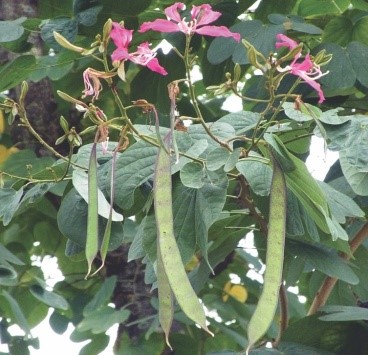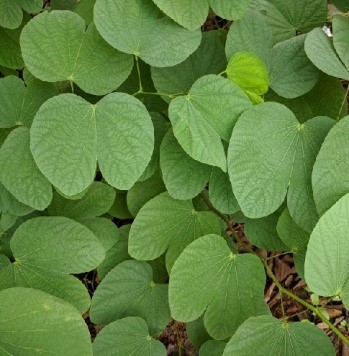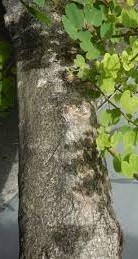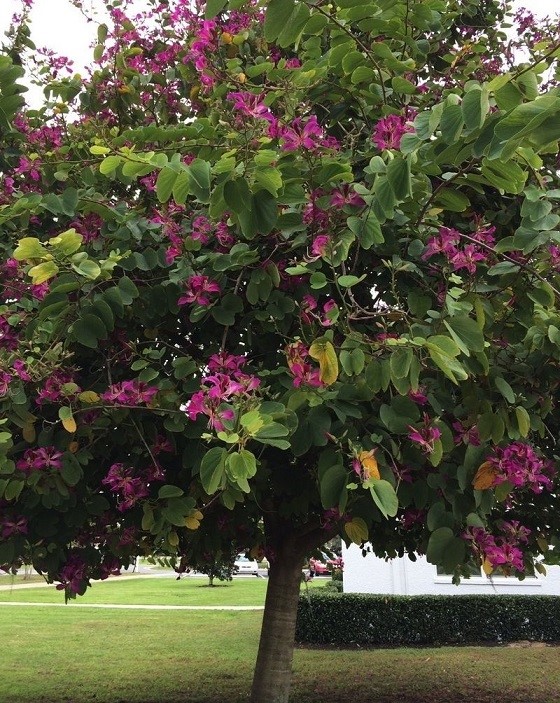Trees
Bauhinia purpurea Linn
Bauhinia purpurea Linn
Description :
A small evergreen tree. The leaves are
single (not compound). Each leaf is divided into two pointed lobes by a cleft
that goes halfway down the leaf. The leaves are heart shaped and vary in size
from 7 to 15 mm in diameter. The bark is dark grey or brown and the young
branches are covered with short, stiff hairs. The flowers are pink, lilac to
purple in color, fragrant and bloom between September and November depending on
geographic location. The pods are flat, thick, slightly curved and pointed.
They vary in length from 15 to 30 cm. Pods mature between January and March. There
are minor problems with defoliating insects. It can be regenerated by seed or
vegetative methods. Seed can be successfully stored for a year if seed is
protected from seed borers. The wood is soft and light with a specific gravity
of 0.57 having Straight Grains.
Distribution :
Native to Pakistan, this tree is found in
the sub-Himalayan tracts. It has a wide distribution through the hills and
plains of the sub-continent and is a favorite avenue tree of the landscape
designers. An intolerant tree of the tropics and sub-tropics within a
precipitation range of 1000 to 2160 mm. It grows within a temperature range of
-1 to 40°C. It is drought resistant and will tolerate light frost. It does best
on well drained, sandy loam or loamy soils.
Uses :
Although a small tree it is relatively
fast growing. It has potential as a farm forestry tree. This is especially true
in the foothill’s regions of Pakistan. Also used for erosion control, fodder,
food (pickle and chutney), tannin, honey, and medicinal (antidote for snake
bite).



